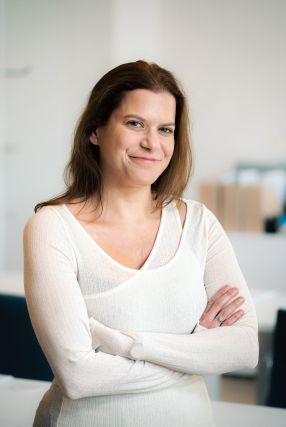‘exhibition history’
Exhibitions and Criticism. Artistic discourses in the 1980s
… such intense, exciting and open debates as the 1980s. The anthology Kiállítások és kritikák [Exhibitions and Criticism], edited by Júliusz Huth and Kristóf Nagy and published by the Central European Research Institute for Art History (KEMKI), offers a comprehensive exploration of this era. Featuring over fifty essays, reflections and reviews originally published during the 1980s, alongside a new, comprehensive study on the art criticism of the decade, the volume delves into the art …
Zsuzsa László
… of research include transnational and decentralized approaches to Central and Eastern European art history and exhibition history, neo-avant-garde, conceptualism, cultural diplomacy, progressive pedagogy and art theory. She works at KEMKI since 2021, between 2019 and 2022 she was museologist at Artpool, between 2009 and 2019 she was curator at tranzit/hu, between 2006 and 2008 she worked at the Studio of Young Artists, and she was a guest lecturer at the Intermedia Department of the …
Educational Events
… events. KEMKI Methodology Workshop These workshops are offered to students of art history and art theory, with the aim of familiarising young professionals with the methodology of art history- and art theory-related research. Participants are also invited to explore the practical challenges involved in research-based work, through creating imaginary projects (exhibition, event, research) based on their interests. Session 1: 16-17 February 2023: What, why, how? …
Art During the Cold War
… The projects within this programme take an interdisciplinary approach, at the intersection of art history, exhibition history, and cultural diplomacy (soft power), in order to illuminate the artistic nodes of bilateral and regional international relations and to examine the memory of the Holocaust in fine arts in the context of Cold War confrontation and East–West rivalry. The two ongoing research projects are The Modern Idol: Henry Moore in the Eastern Bloc and Holocaust and the Arts. …
Judit Galácz
… and international relations. In 2013-2014, she completed a one-year MA programme in Comparative History at the Central European University. From 2014 until 2021, she was a staff member for popular education at the Hungarian Theatre Museum and Institute – Gizi Bajor Actors’ Museum. In 2017, she curated an exhibition on the theatrical work of Lajos Kassák and the journal MA at the Gizi Bajor Actors’ Museum. Her PhD research focuses on János Mácza’s work in the field of theatre theory and the …




